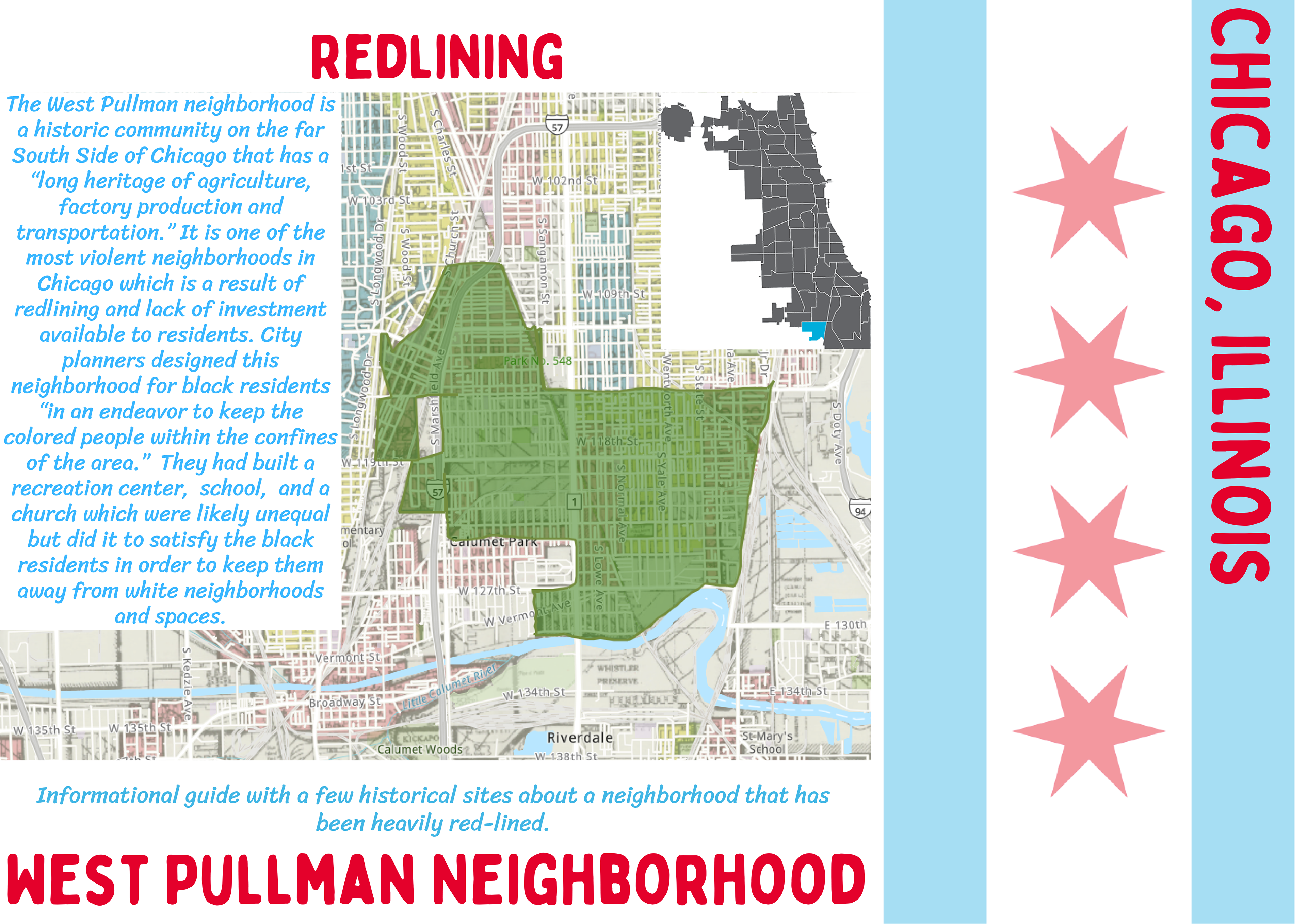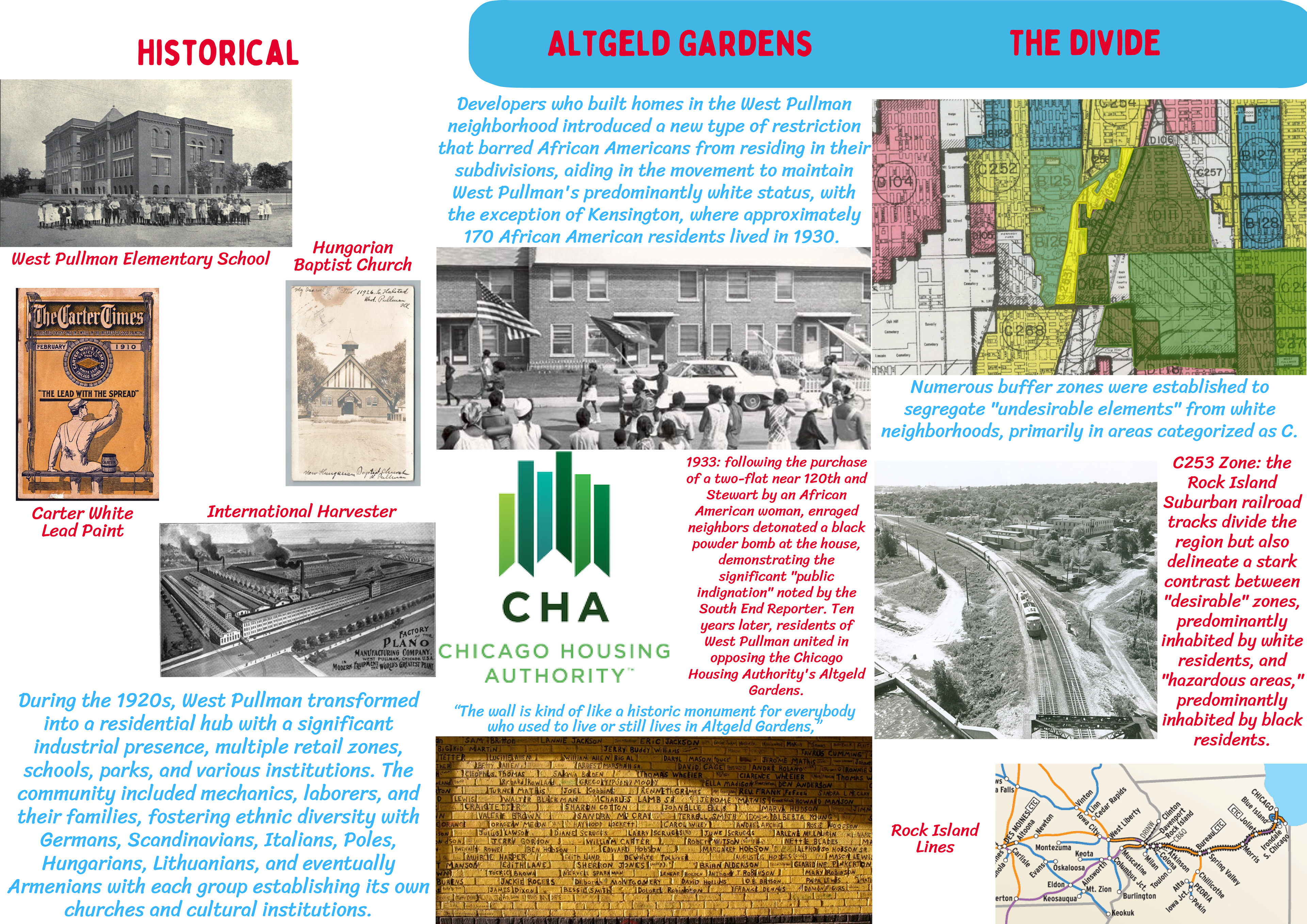Course Description: The Histories and Theories I and II course sequence is intended to cultivate an awareness of how humans have transformed, curated, consumed, and projected meaning onto the landscape, with a critical examination of the places and people that have informed landscape architecture as a profession. The second course in this sequence, LAR 584: Histories and Theories II, shifts to the history of landscape and urban development in the West with an emphasis on the United States, and is focused on the dramati transformations that have taken place in the environment and the profession since pre-colonization through industrialization to the present.
Norris Dam, Photograph by Professor Avigail Sachs


"The West Pullman neighborhood in the south side of Chicago is 14 miles south of the Loop and
formed in the 1920s by merging Kensington and Gano. The area thrived with industry and a
diverse population until post-WWII when housing restrictions kept it predominantly white.
African Americans began moving in during the 1960s, facing challenges like predatory lending
and job loss. Efforts to revitalize the area now focus on cleaning up pollutants and attracting new
businesses, preserving its economic diversity and rich institutional history. I chose to do this
project because it is close to home and something that I knew very little about."
formed in the 1920s by merging Kensington and Gano. The area thrived with industry and a
diverse population until post-WWII when housing restrictions kept it predominantly white.
African Americans began moving in during the 1960s, facing challenges like predatory lending
and job loss. Efforts to revitalize the area now focus on cleaning up pollutants and attracting new
businesses, preserving its economic diversity and rich institutional history. I chose to do this
project because it is close to home and something that I knew very little about."
Kali Flynn Burke, Spring 2024
"It is no mystery that the separation between physical laborers who work on the land, and the professional workforce in offices highlights the profound racial and socioeconomic disparities that pervade this field; these inequalities existed prior to the formal articulation of the discipline. However, our analysis intends to reveal where and how the development of our profession contributed to and benefited from the normalization of manual outdoor work being systematically devalued and considered appropriate only for people. Then, we will assess emerging models of practice that aim to address these complex issues and conclude with our own argument for how the field can make efforts to end the exploitation of laborers in our industry. Overall, this project seeks to examine the harmful cultural attitudes and policies toward labor workers that permeate the design sector, unpack their historical lineage, and critique what contemporary systems perpetuate them today."
Cortney Wolfe and Abbey Freed, Spring 2023
Full text can be read here.
Full text can be read here.
"Ecotone by sourced definition is a region of transition between two biological communities. To provide another take on the definition, an ecotone is “a zone of transition between adjacent ecological systems, having a set of characteristics uniquely defined by space and time scales and by the strength of the interactions between adjacent ecological systems.” In my own words, it is a rich zone that entails impermanence, is ever changing, and is the happy medium between two ecological/biological communities. By now, this term has become more common in use in landscape architecture studies but let us take a step back and review what an ecotone is past it’s definition. Ecotone was first coined by Alfred Russel Wallace, a British naturalist, explorer, geographer, anthropologist, biologist, and illustrator. He first observed the abrupt boundary between two biomes in 1859."
Alexander Holloway, Spring 2022
Full text can be read here.
Full text can be read here.
Final Paper
"Martha Schwartz’s early career was dominated by provocative, and subsequently short-lived, designs that often favored synthetic, off-the-shelf materials, such as purple aquarium gravel and lawn ornaments, over the typical vegetal landscape components. One of Schwartz’s lesser known projects, The Globe of Frogs, is no different. It was constructed within the newly developed Rio Shopping Center in Atlanta, Georgia in 1988, and is best defined by a squadron of gilded frogs, guided by an underlying grid, that appear to worship a forty-foot-high geodesic globe. A few years after the completion of The Globe of Frogs, Schwartz stated that “creating attention-getting spaces ensures that they'll be taken care of.” Ironically, the Rio Shopping Mall soon closed its doors in 1995 – less than a decade after opening. While there is no denying that The Globe of Frogs should be explored as a landscape of spectacle, it is critical to account for the intrinsic complexities of urban renewal and consumerism latent within the site as it was transformed from an African American neighborhood, to a pastoral, vacant field, to a shopping center, and finally into its current form as a mixed-use development."
Written by Faith Jackson, Spring 2021
Full text can be read here.
Full text can be read here.
Final Paper
"Idealism in the practice and philosophy of architecture has become a trope of naivety. The world in its current state easily dismantles egalitarian dreams as unrealistic or too fragile, often disregarding the proportion of an endeavor to smudge its perceived rosiness. This is not to say that the field does not appreciate earnest effort in benevolent lifestyle facilities, but that as the economic, social, and contextual drivers of the world form an oppressive tangle, designers must work within strict and realistic parameters when striving towards idealism. Any superfluous additions will dilute the successes and muddle the legible goals of their effort. A large reason that the Sea Ranch condominiums by MLTW endure as a symbol of eco-idealism is that the project, at least at its onset, specified its efforts in placemaking. This strategy freed both designers and developers from asking would the project work and allowed them to focus on how the project would work."
Written by Matt Cowan, Spring 2019
Full text can be read here.
Full text can be read here.